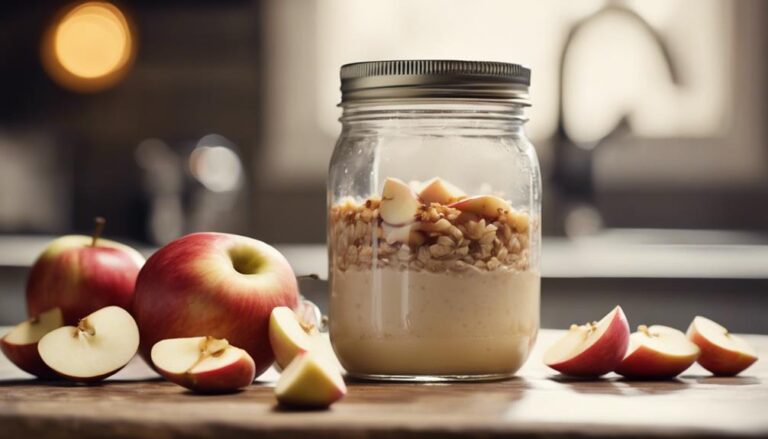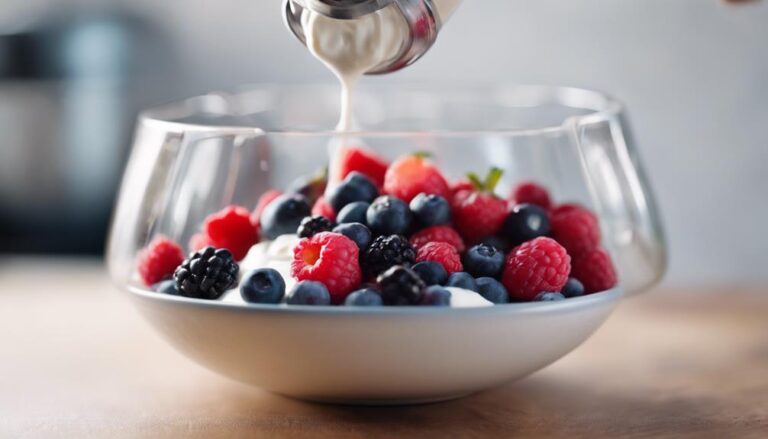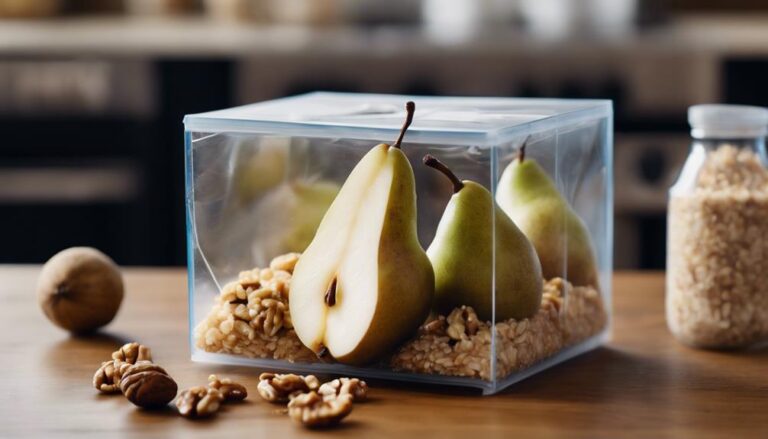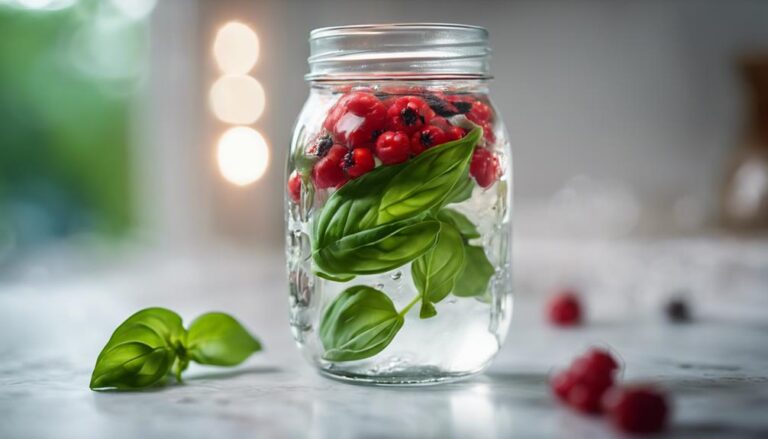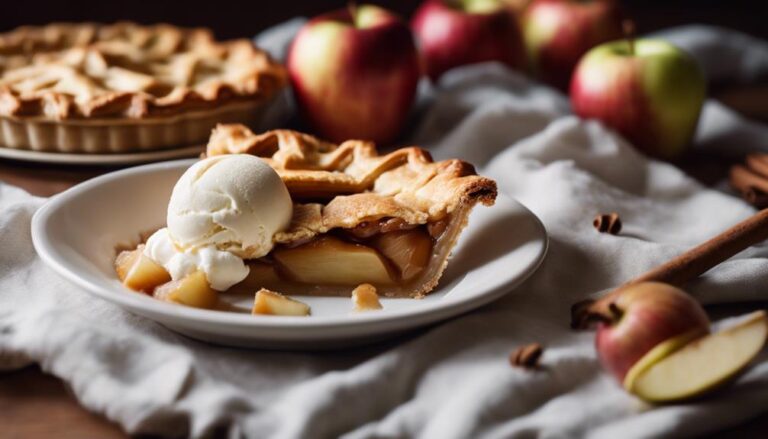Sous Vide Cold Brew With Local Coffee Beans
When you tap into the potential of sous vide cold brew with local coffee beans, you create a rich, customizable flavor profile. Start by choosing medium to dark roast beans from nearby roasters for freshness. Experiment with extraction times for varying intensity, from 8 to 24 hours. Adjust grind size and temperature for flavor enhancement. This method offers consistent results, a smooth taste, and allows for unique customization. Elevate your coffee game with this refined brewing technique that promises a high-quality product. Discover a world of rich possibilities by infusing your cold brew with the flavors of your local coffee beans.
What You Will Learn Here
- Use local coffee beans for unique flavor profiles.
- Experiment with sous vide for consistent extraction.
- Enhance flavor infusion with local ingredients.
- Customize strength and intensity to preference.
- Elevate cold brew experience with rich, smooth flavors.
Cold Brew Evolution
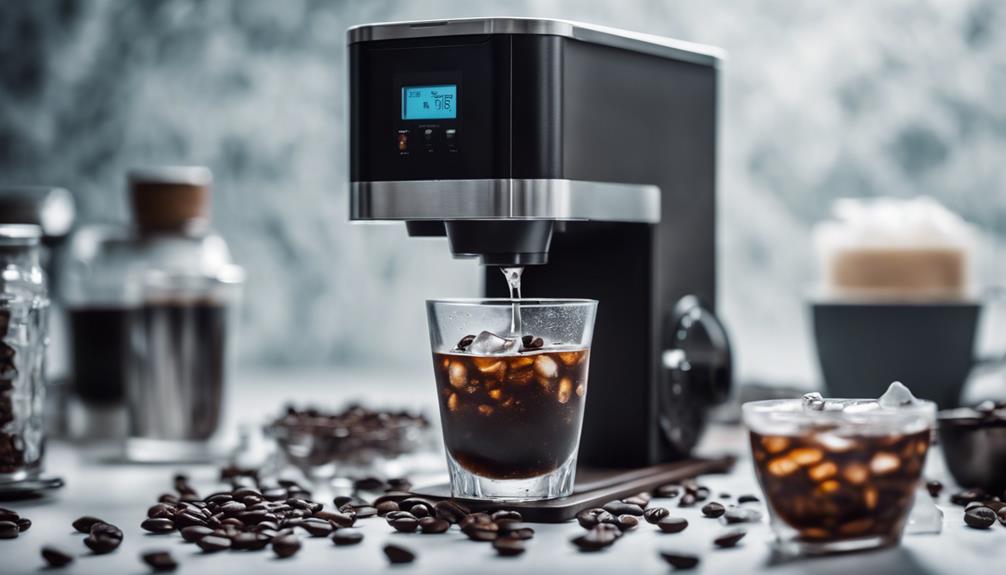
As you explore the evolution of cold brew coffee, consider its origins, brewing techniques, and diverse flavor profiles. Understanding where cold brew came from, how it's made, and the range of tastes it can offer will provide insight into this beloved beverage's journey.
Analyzing these key points can deepen your appreciation for the complexity and artistry behind a simple yet remarkable cup of cold brew.
Cold Brew Origins
Tracing the evolution of cold brew reveals a fascinating journey of how this popular coffee beverage came to be. Cold brew history dates back centuries, with its brewing origins often linked to Japan and the Dutch.
In Japan, the Kyoto-style cold brew, known as 'Dutch coffee,' emerged in the 1600s. The method involved steeping coffee grounds in cold water for an extended period, resulting in a smooth and concentrated brew.
Dutch traders introduced cold brew to Europe in the 17th century, where it gained popularity for its unique flavor profile. Over time, cold brew has evolved from a regional specialty to a global phenomenon, captivating coffee enthusiasts with its rich history and distinct brewing techniques.
Brewing Techniques
The evolution of cold brew from its historical roots in Japan and Europe has led to a myriad of innovative brewing techniques, shaping the way this beloved coffee beverage is crafted today.
Flavor extraction in cold brew has been revolutionized by methods like immersion brewing, where coffee grounds steep in cold water for an extended period. Additionally, the use of brewing equipment such as specialized cold brew makers and cold drip systems has enhanced the efficiency and consistency of the brewing process.
These advancements have allowed for better control over factors like brew time and coffee-to-water ratios, resulting in a smoother and more nuanced flavor profile. By embracing these modern techniques, coffee enthusiasts can enjoy a superior cold brew experience that highlights the natural nuances of the beans.
Flavor Profiles
Crafting a distinctive cold brew flavor profile requires a meticulous balance of brewing parameters and bean selection. Taste preferences play a vital role in determining the ideal flavor profile. Different brewing methods can accentuate specific flavor notes, allowing for a customizable experience.
Ingredient sourcing directly impacts the flavor complexity of cold brew. Local coffee beans often offer unique flavor profiles that can elevate the taste experience. Understanding the nuances of ingredient sourcing and brewing methods is essential for achieving a desired flavor profile.
Experimenting with various parameters, such as grind size and brew time, can help fine-tune the flavor to match specific taste preferences. By carefully considering these elements, you can create a cold brew that embodies the perfect balance of flavors.
Local Coffee Selection

When selecting local coffee beans for your sous vide cold brew, take into account the flavor profile and roast level to enhance the unique qualities of your brew. Local coffee culture and coffee roasting techniques play an important role in determining the beans' characteristics. Here are three key factors to keep in mind when choosing local coffee beans for your sous vide cold brew:
- Origin: Explore beans from different regions within your local area to experience diverse flavor profiles influenced by the soil, climate, and altitude unique to each location.
- Roast Level: Opt for beans that are medium to dark roast to bring out rich, bold flavors that can withstand the longer brewing process of sous vide, providing a well-rounded and robust cold brew.
- Freshness: Choose freshly roasted beans to capture the full essence of the coffee's flavors, as beans lose their complexity and vibrancy over time. Purchase from local roasters for beans that are likely to be roasted closer to your brewing time, ensuring peak freshness and flavor.
Trendy Cold Brew Creations
You can explore the innovative world of trendy cold brew creations by experimenting with a local coffee cold brew recipe that highlights the unique flavors of your region.
Enhance your cold brew experience by infusing it with unconventional ingredients that add a special touch to your morning ritual.
Dive into the world of specialty cold brew infusions to discover new and exciting flavor combinations that will elevate your coffee game.
Local Coffee Cold Brew Recipe
For those seeking an invigorating and locally-inspired cold brew experience, contemplate exploring a unique Local Coffee Cold Brew Recipe that captures the essence of trendy cold brew creations. When contemplating indulging in this innovative beverage, here are three key elements to ponder:
- Local Coffee Sustainability: Opt for locally sourced coffee beans to support sustainability practices within your community.
- Cold Brew Innovations: Experiment with different brewing techniques and infusion methods to elevate the flavors and textures of your cold brew.
- Community Coffee Collaborations: Engage in collaborations with local coffee shops or roasters to discover new flavor profiles and expand your cold brew horizons.
Unique Cold Brew Infusion
Exploring unique cold brew infusion techniques can reveal a world of trendy creations that redefine traditional coffee experiences. When experimenting with specialty blends and infusion methods, you can discover a domain of flavors and aromas that tantalize the taste buds. Consider the following to elevate your cold brew game:
- Barrel-Aged Cold Brew: Infusing cold brew with the rich, oaky flavors from a barrel-aged process adds complexity and depth to your coffee experience.
- Botanical Infusions: Incorporating herbs like lavender or spices like cinnamon during the brewing process can create a distinctive and aromatic cold brew concoction.
- Citrus Twist: Adding citrus fruits like orange or lemon rinds to your cold brew infusion can impart a invigorating and zesty kick to your coffee drink.
Specialty Cold Brew Infusion
To enhance your cold brew experience even further, explore the world of Specialty Cold Brew Infusion, where trendy creations redefine traditional coffee flavors with innovative blends and infusion techniques. When delving into this domain, consider these key aspects:
- Coffee Sourcing: Opt for specialty beans from local roasters to elevate the flavor profile of your cold brew.
- Infusion Methods: Experiment with techniques like barrel-aging, nitrogen infusion, or fruit-infused cold brew to add unique dimensions to your beverage.
- Cold Brew Trends: Stay updated on the latest trends in cold brew, such as cascara-infused cold brew or matcha cold brew, to discover new and exciting flavor combinations.
Brewing Techniques
You can enhance your Sous Vide cold brew by mastering key brewing techniques like temperature control, extraction time variations, and flavor infusion methods.
By carefully managing the temperature during brewing, you can achieve a smoother, less acidic cold brew. Experimenting with extraction times allows you to fine-tune the strength and flavor profile of your cold brew to suit your preferences.
Additionally, exploring different flavor infusion methods opens up a world of possibilities for creating unique and delicious cold brew variations.
Temperature Control Techniques
Implementing precise temperature control techniques is essential in the brewing process to guarantee ideal extraction and flavor development in sous vide cold brew made with local coffee beans.
When focusing on temperature control, using reliable brewing equipment such as a sous vide immersion circulator is vital. This tool ensures that the water temperature remains constant throughout the brewing duration, typically set between 160-185°F for cold brew.
Maintaining this consistent temperature allows for controlled extraction of flavors from the coffee grounds without the risk of over-extraction or under-extraction. By carefully monitoring and adjusting the temperature using the sous vide immersion circulator, you can achieve a well-balanced and flavorful cold brew that highlights the unique characteristics of your local coffee beans.
Extraction Time Variations
Ensuring peak flavor extraction in sous vide cold brew with local coffee beans also involves exploring variations in extraction time as a key brewing technique. By adjusting the extraction time, you can control the flavor intensity and aroma enhancement of your cold brew. Here are some extraction time tips for your cold brew experimentation:
| Extraction Time | Flavor Intensity |
|---|---|
| 8 hours | Mild |
| 12 hours | Medium |
| 16 hours | Strong |
| 20 hours | Bold |
| 24 hours | Intense |
Experiment with different extraction times to find the perfect balance between flavor strength and aroma. This process allows you to customize your cold brew to suit your preferences and create a unique coffee experience.
Flavor Infusion Methods
To achieve peak flavor infusion in sous vide cold brew with local coffee beans, experiment with various brewing techniques that enhance the extraction process. Focus on optimizing flavor extraction by adjusting the grind size of the coffee beans. A finer grind can lead to more intense flavors, while a coarser grind may result in a smoother taste.
Additionally, consider the temperature at which you brew the coffee; a lower temperature for a longer period can extract different flavor profiles than a higher temperature for a shorter duration. Moreover, ingredient combination plays an essential role in flavor infusion. Try adding spices like cinnamon or cardamom to the coffee grounds before brewing to introduce new layers of flavor.
Experimentation with brewing techniques and ingredient combinations will help you create a truly unique sous vide cold brew experience.
Final Thoughts
In conclusion, the integration of sous vide technique with local coffee beans presents a refined and consistent method for crafting cold brew coffee. By combining precise temperature control with extended brewing times, this method extracts a well-rounded flavor profile from the coffee beans, resulting in a smooth and rich cold brew experience. Whether you are a coffee enthusiast seeking to elevate your home brewing or a coffee shop aiming to offer a unique and high-quality product, sous vide cold brew with local coffee beans could be the solution you've been looking for.
—
| Benefits | Considerations | Tips |
|---|---|---|
| Consistent Flavor Extraction | Longer Brewing Time | Use Freshly Roasted Beans |
| Smooth and Rich Taste | Need for Sous Vide Equipment | Experiment with Different Bean Origins |
| Customizable Strength | Initial Investment Cost | Adjust Temperature and Time According to Preferences |
Frequently Asked Questions
Can I Reuse the Coffee Grounds for a Second Batch?
When making a second batch of cold brew, reusing grounds can impact taste profiles and sustainability. However, the flavor may be weaker. To balance taste and sustainability, consider using fewer reused grounds with fresh ones for best results.
How Long Can I Store Cold Brew in the Fridge?
When storing cold brew in the fridge, remember that over time, the flavor can degrade. For best taste, consume your cold brew within 1-2 weeks. Properly sealed containers can help maintain freshness longer, but monitor for changes in flavor.
Does the Brewing Time Affect the Caffeine Content?
When brewing coffee, the brewing time directly impacts caffeine extraction. Longer times result in higher caffeine content. Additionally, the taste profile can be affected by brewing temperature, influencing extraction efficiency. Experimenting with variables can lead to desired results.
Is It Necessary to Use Filtered Water for Cold Brew?
For the best taste, filtered water is essential for cold brew. Using tap water may introduce unwanted flavors. By ensuring good water quality, you'll notice a significant difference in taste when compared to using unfiltered water.
Can I Use Flavored Coffee Beans for Cold Brew?
Yes, you can use flavorful beans for cold brew. Specialty roasts add unique tastes to your iced coffee. Experiment with different flavors to find your favorite. Enjoy the rich, aromatic experience of flavored cold brew.
Conclusion
To sum up, utilizing local coffee beans in sous vide cold brew offers a unique and flavorful twist to this popular beverage.
By carefully selecting high-quality beans and experimenting with different brewing techniques, you can create a delicious cold brew that highlights the natural flavors of the coffee.
Whether you prefer a classic cold brew or a creative concoction, sous vide cold brew with local coffee beans is a versatile and customizable option for coffee lovers everywhere.






